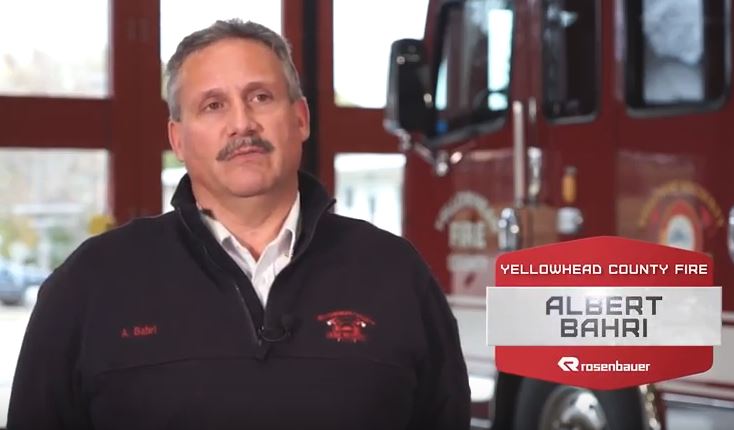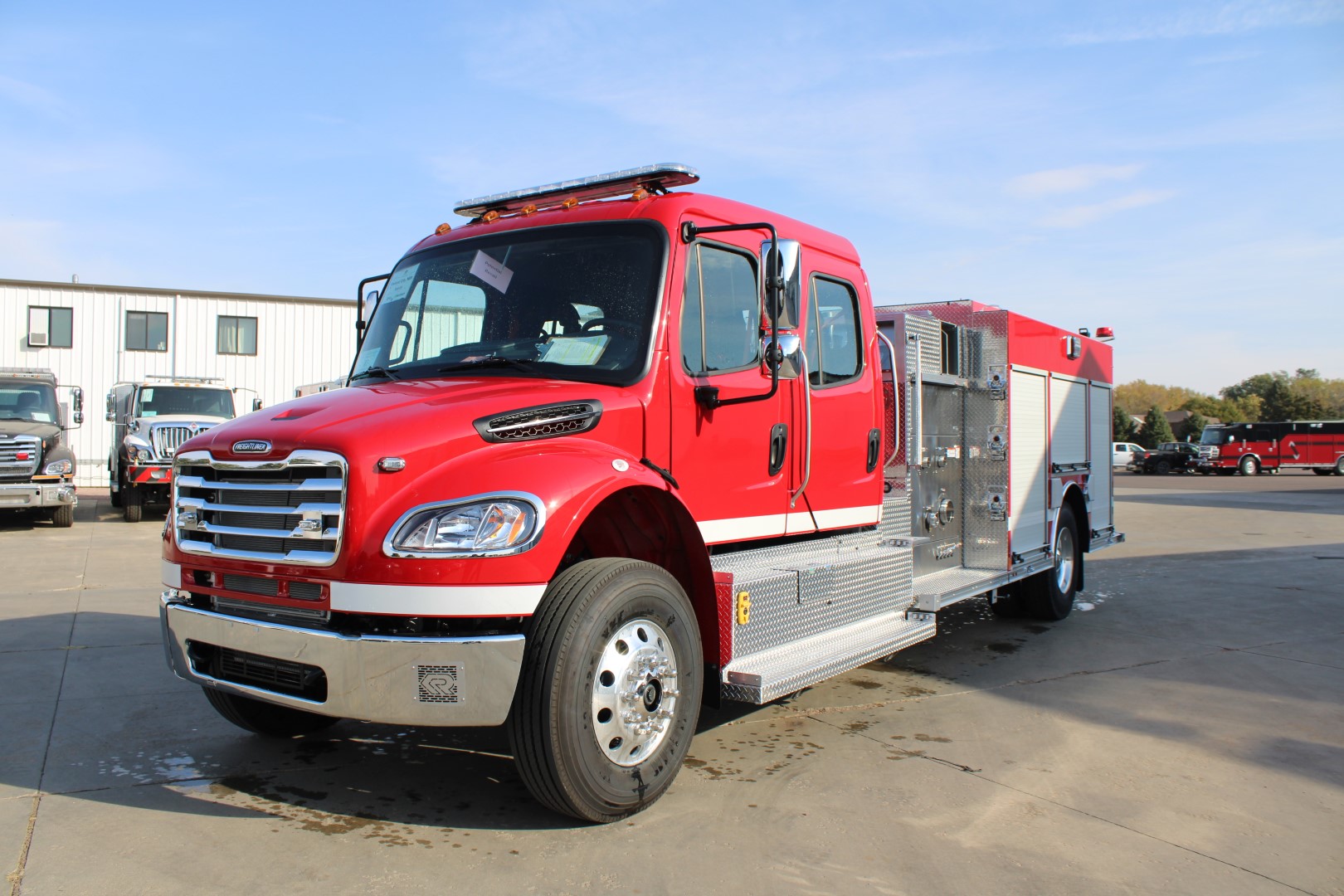Albert Bahri
Yellowhead County, AB
Yellowhead County is a very diverse and busy county. It’s 22,000 square kilometers in size, basically 3 and 1/2 hours to drive east to west, and about the same, if not a bit more, drive north to south. Lots of interesting things here in the county. We’ve got mountains on our west side. We’ve got a lot of farmland.
We have Highway 16 that runs through the area– major, major highway east to west in Alberta, as well as a large CN rail line that runs east west. Other unique things that are out there– it’s industry. We have a lot of oil– more so natural gas than oil, but we still have a lot of industry here. The community in Peers, a beautiful little hamlet.
Evansburg’s another community that we have– again, just a beautiful little hamlet that’s nestled in the east side of the county with rivers that– you know, Pembina River comes around through it. There’s another spot that we actually had a ferry. It was called the Rosevear Ferry. It ran for many years in Yellowhead County, crossed a river in the summertime and a little bit of an ice road in wintertime. That’s currently being replaced with a bridge. And again, very, very pretty area to go to.
Yellowhead County Council was very forthcoming with us and we presented a plan to them on station locations and what we needed to do to start to replace those stations. So you’re standing in the New Evansburg fire station. We’re also building a new station in Wildwood. So it’s our next one, just next community to the west. Very similar to this building, just a bit smaller.
Buying a truck is not just going into a grocery store or an electronics store and buying something. When you buy a truck, you’re buying something and a relationship that’s going to last for a number of years.
Jay was the point person for them, and he came out. We did our pre-builds. We did our plans, put them all together, and very versed and thorough in what we were looking for and understood what we were looking for, coming from a fire service background as well.
Every department does things just in a slightly different way. And Rosenbauer really steps up to the plate with being able to customize those units for the particular departments.
The biggest customization that we put in for Yellowhead county was the rear mount pump system. And what we tried to do with this was make the pump handle itself very user friendly. And it’s got a pictorial representation of what the pump actually is and where the lines are. The truck is color-coded, so you know exactly what button to push.
And the fact that all of our discharge ports come out of either the rear of the vehicle or the front– there’s nothing sticking out of the sides. And that was our biggest optimization of the vehicle to make sure that we could keep a really small platform on the roadway and keep our firefighters safe in doing that.
You take pride in ownership in everything. You take pride in ownership in your community. You take pride and ownership in the job that you do, pride and ownership in your apparatus and in your station.
When you look at the back of this, one of the things we wanted to customize and design was the discharge area and then our ladder storage. So when you look at this compartment, our intake and discharge area of the truck is at the back. So if we’re going to use a PortaTank, we can put it in very close to the back of the vehicle. It keeps that profile of the truck from getting very wide, keeps it maybe long, but it’s not stuck out in the middle of the road.
The operator that’s running the pump can monitor whatever is going on here, can keep an eye on their PortaTank, keep an eye on connections in the back. And the one thing that’s nice about the way this truck is set up is there’s no noise. The engine is at the front of the vehicle. You can stand and talk like we’re talking now and we don’t get that noise from the road.
We went with a customized tank design and incorporated our ladders just above our pump compartment. This compartment also gives us great access to the pump area, the back of the truck, and we asked for that so that, from a maintenance perspective, we could get in, maintain valves, do inspections on a regular basis, and make sure that we have everything we need, again, at a low level.
And we set up, again, the driver’s side of the vehicle so that it was mostly for fire suppression, fire attack, and our officer’s side of the vehicle so it’s set up for vehicle extrication, rescue, and any type of special rescue that we may have to do. We wanted to set this vehicle up so that if you needed a strut, you could walk over to the vehicle, grab the strut that you wanted and the extension and grab a proper tip for the base.
So the idea of this is you pick the strut that you want and the tip, then you would select your base. And we did put an extension on here. And the idea of this compartment is now that you walk away from the vehicle with that strut assembled, so when you get to where you’re going, you just pop the strut in place and you don’t have to mess with putting the base on, putting a tip, or putting the extension on the strut. It’s all ready to go when you leave the vehicle.
We were able to incorporate some more space. So with our bases, if you’ve got somewhere that you didn’t have proper grasp on your base or you weren’t able to get a strut in, we were able to manufacture a holding device so that we could put our pickets in there as well. So if we needed to put a picket in a base or put four pickets in the base, you could just come over to the truck, select it off, pull it away, put a heavy pry bar on.
And then on this side of the compartment, we went with our come-alongs, rated steel come-alongs, and our big mauls so you can drive the pickets in or whatever else you need them for.
And again, the equipment that we have here, as far as hearse goes, we wanted to make sure that you can access it easily. So instead of reaching in the compartment to grab the tools, you know, we’ve got our heavy spreaders, our heavy cutters. We’ve got our quad pump. We can run four tools at a time or two in what they call turbo mode with our chains. And if you don’t want to, you don’t have to take this hydraulic pump off of the vehicle. You could run it from where it is positioned right now.
We asked to have extra heavy struts put in. So you’ll see when I go to move these, they do look like they’re quite stiff, and we wanted them that way. We didn’t want these just to deploy, or you can imagine this truck being tipped on an angle. If that strut wasn’t holding back that equipment, being as heavy as it is, could slide open.
These shelves are designed to hold 500 pounds. So when you do go to move them, you have to put a little bit of muscle into them. From our perspective is we’ve got 250 feet of inch and 3/4 blue and red on the front of this truck that deploys very quickly. You grab it and away you go.
One of the features that we had with this truck is we put a 1,500 imperial gallon per minute pump in it. We want that big smash when we’re pulling up, but we also carry 1,000 gallons of water. So we can deploy that blitz force on the rear, which is going to empty the tank very quickly and apply properly to fire, or we can hit it with these two attack lines in a very rapid succession.
It’s hit the road in July and it’s responded to several calls. We had some pretty major calls. It’s worked exactly the way we planned on it. The truck was built the way we asked, and again, you couldn’t ask for a better truck.



